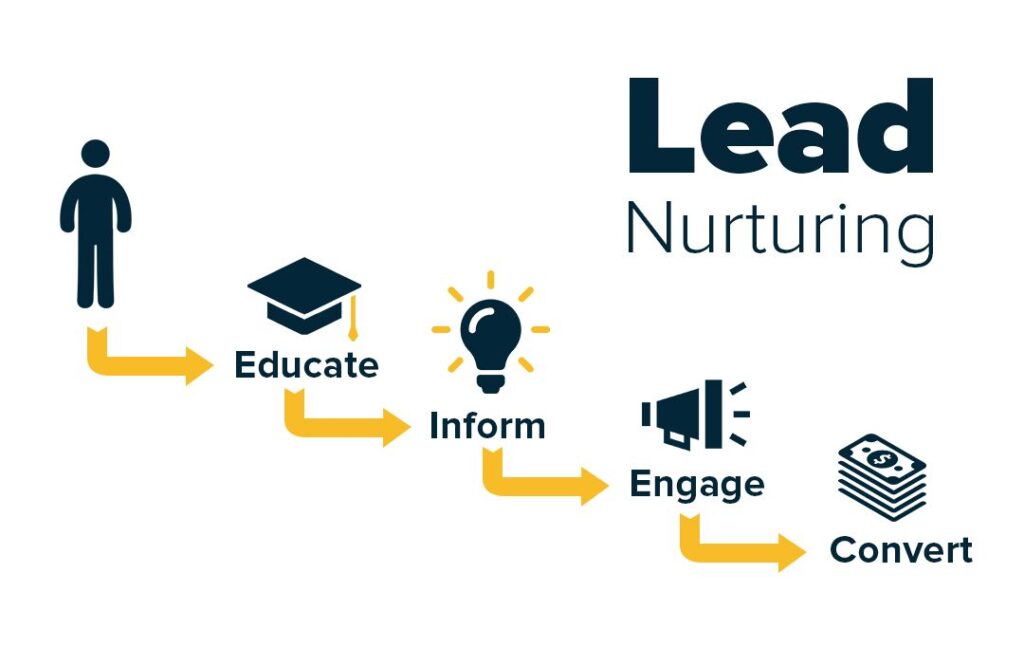
Supercharge Your Sales: A Comprehensive Guide to CRM, Marketing, and Lead Nurturing
In today’s fast-paced business environment, simply having a great product or service isn’t enough. You need to actively cultivate relationships with potential customers, guide them through the sales funnel, and ultimately, convert them into loyal clients. This is where the power of CRM (Customer Relationship Management), marketing, and lead nurturing converges. This in-depth guide will explore how these three crucial elements work together to boost your sales, enhance customer engagement, and drive sustainable business growth.
Understanding the Foundations: CRM, Marketing, and Lead Nurturing
Before we dive into the specifics, let’s establish a clear understanding of each component and how they interrelate. Think of it as the foundation upon which your sales success is built.
CRM: The Central Hub
CRM isn’t just software; it’s a philosophy. At its core, CRM is a strategy for managing all your company’s interactions with current and potential customers. It’s about understanding their needs, preferences, and behaviors to provide a personalized and exceptional experience. The CRM system itself is the technology used to organize, automate, and synchronize all aspects of customer interaction, from initial contact to post-sale support.
Key benefits of a robust CRM system include:
- Centralized Data: All customer information is stored in one place, making it easily accessible to authorized team members.
- Improved Communication: Streamlined communication channels ensure consistent messaging across all touchpoints.
- Enhanced Sales Efficiency: Automation features free up sales reps to focus on closing deals.
- Better Customer Service: Access to comprehensive customer data allows for faster and more effective support.
- Data-Driven Decision Making: CRM provides valuable insights into customer behavior and sales performance.
Popular CRM platforms include Salesforce, HubSpot CRM, Zoho CRM, and Microsoft Dynamics 365. The best choice for your business will depend on your specific needs, budget, and the size of your team. Consider factors like ease of use, integration capabilities, and scalability when making your decision.
Marketing: Reaching Your Audience
Marketing encompasses all the activities you undertake to promote your products or services and attract potential customers. It’s about creating awareness, generating leads, and building brand recognition. Effective marketing strategies use a variety of channels, including:
- Content Marketing: Creating valuable and engaging content (blog posts, videos, infographics) to attract and inform your target audience.
- Social Media Marketing: Building a presence on social media platforms to connect with potential customers and promote your brand.
- Email Marketing: Sending targeted email campaigns to nurture leads and drive conversions.
- Search Engine Optimization (SEO): Optimizing your website and content to rank higher in search engine results.
- Paid Advertising: Using platforms like Google Ads and social media ads to reach a wider audience.
The key to successful marketing is understanding your target audience and tailoring your message to resonate with them. This involves creating buyer personas, identifying their pain points, and providing solutions that meet their needs. Marketing should seamlessly integrate with your CRM system to track lead sources, measure campaign performance, and personalize the customer journey.
Lead Nurturing: Guiding Prospects Through the Funnel
Lead nurturing is the process of building relationships with potential customers at every stage of the sales funnel. It involves providing them with relevant information, addressing their concerns, and guiding them towards a purchase decision. This is a long game, not a sprint. It requires patience, persistence, and a deep understanding of your leads’ needs.
The goals of lead nurturing include:
- Building Trust and Credibility: Establishing your company as a thought leader in your industry.
- Educating Leads: Providing them with the information they need to make an informed decision.
- Increasing Engagement: Keeping your brand top-of-mind and encouraging interaction.
- Driving Conversions: Moving leads closer to a purchase decision.
- Shortening the Sales Cycle: By providing the right information at the right time, you can accelerate the sales process.
Lead nurturing often involves a series of automated email campaigns, personalized content, and targeted offers. The specific tactics you use will depend on your target audience, the complexity of your sales cycle, and the resources available to you. Effective lead nurturing is a critical component of any successful sales strategy.
The Synergy: How CRM, Marketing, and Lead Nurturing Work Together
The true power lies in the synergy between CRM, marketing, and lead nurturing. They are not independent entities but rather interconnected components of a cohesive sales strategy. When properly integrated, they create a powerful engine for driving growth.
Here’s how they work together:
- Marketing Generates Leads: Marketing campaigns attract potential customers and capture their contact information. This data is then fed into your CRM system.
- CRM Manages Leads: The CRM system tracks leads, segments them based on their behavior and demographics, and assigns them to the appropriate sales representatives.
- Lead Nurturing Educates and Engages: Automated lead nurturing campaigns are triggered based on lead behavior and segmentation. These campaigns provide relevant content, address concerns, and move leads through the sales funnel.
- Sales Converts Leads into Customers: Sales representatives use the information in the CRM system to personalize their interactions with leads and close deals.
- CRM Tracks Customer Interactions: After a sale, the CRM system continues to track customer interactions, providing valuable insights for customer service, upselling, and cross-selling.
This cyclical process ensures that you are constantly engaging with your leads, providing them with value, and guiding them towards a purchase decision. This integrated approach leads to higher conversion rates, increased customer loyalty, and ultimately, sustainable business growth.
Implementing a Successful CRM, Marketing, and Lead Nurturing Strategy
Implementing a successful strategy requires careful planning, execution, and ongoing optimization. Here’s a step-by-step guide to get you started:
1. Define Your Goals and Objectives
Before you start implementing any new strategies, you need to define your goals and objectives. What do you want to achieve with your CRM, marketing, and lead nurturing efforts? Are you looking to increase sales, improve customer retention, or build brand awareness? Clearly defined goals will guide your efforts and help you measure your success.
Consider setting SMART goals: Specific, Measurable, Achievable, Relevant, and Time-bound. For example, “Increase sales by 20% in the next quarter” is a SMART goal.
2. Choose the Right CRM Platform
Selecting the right CRM platform is crucial for the success of your strategy. Consider the following factors:
- Features: Does the platform offer the features you need, such as contact management, sales automation, marketing automation, and reporting?
- Scalability: Can the platform grow with your business?
- Integration: Does the platform integrate with your existing marketing tools and other business systems?
- Ease of Use: Is the platform user-friendly and easy to learn?
- Pricing: Does the platform fit within your budget?
Research different platforms and compare their features, pricing, and reviews. Consider requesting demos and free trials to get a feel for the platform before making a decision.
3. Segment Your Audience
Segmentation is the process of dividing your audience into smaller groups based on shared characteristics, such as demographics, behavior, and interests. This allows you to tailor your marketing messages and lead nurturing campaigns to specific segments, increasing their effectiveness.
Consider segmenting your audience based on:
- Demographics: Age, gender, location, income, etc.
- Behavior: Website activity, email opens, downloads, etc.
- Interests: Topics they’ve shown interest in, content they’ve consumed, etc.
- Purchase History: What they’ve bought in the past, how much they spent, etc.
Use your CRM system to track and analyze customer data to identify the best segmentation strategies for your business.
4. Create Compelling Content
Content is the fuel that drives your lead nurturing campaigns. You need to create valuable, engaging, and relevant content that resonates with your target audience. This includes:
- Blog Posts: Share your expertise and provide valuable insights on topics related to your industry.
- Ebooks and White Papers: Offer in-depth information on specific topics to attract and educate leads.
- Videos: Create video tutorials, explainer videos, and customer testimonials to engage your audience.
- Infographics: Present complex information in an easily digestible format.
- Case Studies: Showcase your successes and demonstrate the value of your products or services.
Your content should be tailored to the different stages of the sales funnel. For example, top-of-funnel content should focus on awareness and education, while bottom-of-funnel content should focus on driving conversions.
5. Design Effective Lead Nurturing Campaigns
Lead nurturing campaigns should be designed to guide leads through the sales funnel and convert them into customers. This involves creating a series of automated emails, personalized content, and targeted offers.
Key elements of effective lead nurturing campaigns include:
- Welcome Emails: Introduce your brand and provide a warm welcome to new leads.
- Educational Content: Provide valuable information to address their pain points and educate them about your products or services.
- Targeted Offers: Offer exclusive discounts or promotions to encourage conversions.
- Personalized Messaging: Tailor your messages to the specific interests and needs of each lead.
- Segmentation: Segment your leads and create targeted campaigns based on their behavior and demographics.
Use your CRM system to automate your lead nurturing campaigns and track their performance. This will allow you to optimize your campaigns and improve your results.
6. Track and Analyze Your Results
Tracking and analyzing your results is essential for measuring the effectiveness of your CRM, marketing, and lead nurturing efforts. Use your CRM system to track key metrics, such as:
- Lead Generation: The number of leads generated through your marketing campaigns.
- Conversion Rates: The percentage of leads that convert into customers.
- Sales Revenue: The revenue generated from your sales efforts.
- Customer Acquisition Cost (CAC): The cost of acquiring a new customer.
- Customer Lifetime Value (CLTV): The total revenue generated from a customer over their lifetime.
- Email Open Rates and Click-Through Rates: The performance of your email marketing campaigns.
Regularly review your results and make adjustments to your strategy as needed. This will help you optimize your campaigns and improve your overall sales performance.
7. Integrate and Automate
Integration and automation are key to streamlining your processes and improving efficiency. Integrate your CRM system with your marketing automation tools, email marketing platforms, and other business systems to ensure that data flows seamlessly between them.
Use automation to:
- Automate Lead Qualification: Automatically score leads based on their behavior and demographics.
- Automate Lead Assignment: Automatically assign leads to the appropriate sales representatives.
- Automate Email Marketing: Automatically send targeted email campaigns based on lead behavior.
- Automate Task Creation: Automatically create tasks for sales representatives to follow up with leads.
Automation frees up your team to focus on more strategic tasks, such as building relationships with customers and closing deals.
Best Practices for CRM, Marketing, and Lead Nurturing
To maximize the effectiveness of your CRM, marketing, and lead nurturing efforts, follow these best practices:
- Prioritize Data Quality: Ensure that your CRM system contains accurate and up-to-date customer data.
- Personalize Your Messaging: Tailor your messages to the specific needs and interests of each lead.
- Provide Value: Offer valuable content and resources to your leads.
- Be Consistent: Maintain a consistent brand voice and messaging across all your marketing channels.
- Be Patient: Lead nurturing takes time. Don’t expect to see results overnight.
- Continuously Optimize: Regularly review your results and make adjustments to your strategy as needed.
- Train Your Team: Provide your team with the training they need to effectively use your CRM system and implement your marketing and lead nurturing strategies.
- Focus on Customer Experience: Prioritize the customer experience at every touchpoint.
- Stay Up-to-Date: Keep abreast of the latest trends and technologies in CRM, marketing, and lead nurturing.
Common Challenges and How to Overcome Them
Implementing a successful CRM, marketing, and lead nurturing strategy can present some challenges. Here are some common obstacles and how to overcome them:
- Lack of Data: Insufficient or inaccurate customer data can hinder your efforts. Overcome this by implementing data collection strategies, such as lead capture forms and data enrichment tools.
- Poor Segmentation: Ineffective segmentation can lead to irrelevant messaging and low engagement. Refine your segmentation strategies by analyzing customer data and creating more specific segments.
- Lack of Integration: Integrating your CRM system with your marketing tools can be complex. Choose a CRM platform that integrates seamlessly with your existing systems.
- Low Engagement: If your leads aren’t engaging with your content or emails, your lead nurturing campaigns may not be effective. Improve engagement by creating more compelling content, personalizing your messaging, and experimenting with different channels.
- Lack of Buy-In: If your team doesn’t understand the importance of CRM, marketing, and lead nurturing, they may not fully embrace the strategy. Educate your team about the benefits of these strategies and provide them with the training they need to succeed.
- Measuring ROI: It can be difficult to accurately measure the ROI of your marketing and lead nurturing efforts. Track key metrics, such as lead generation, conversion rates, and sales revenue, to measure your return on investment.
The Future of CRM, Marketing, and Lead Nurturing
The landscape of CRM, marketing, and lead nurturing is constantly evolving. As technology advances and customer expectations change, businesses must adapt their strategies to stay ahead of the curve. Here are some trends to watch:
- Artificial Intelligence (AI): AI is being used to automate tasks, personalize customer experiences, and improve sales forecasting.
- Personalization: Customers expect personalized experiences. Businesses are using data and technology to tailor their messaging and offers to individual needs.
- Omnichannel Marketing: Customers interact with businesses across multiple channels. Businesses are integrating their marketing efforts across all channels to provide a seamless customer experience.
- Marketing Automation: Marketing automation tools are becoming more sophisticated, allowing businesses to automate more tasks and personalize their campaigns.
- Data Privacy: Data privacy is a growing concern. Businesses must prioritize data security and comply with data privacy regulations.
By embracing these trends, businesses can enhance their CRM, marketing, and lead nurturing efforts and achieve even greater success. The future of sales is about building strong relationships with customers, providing personalized experiences, and leveraging technology to drive growth.
Conclusion: Embrace the Power of Integration
CRM, marketing, and lead nurturing are no longer separate entities but rather integrated components of a holistic sales strategy. By understanding the foundations of each component, embracing their synergy, and implementing a well-defined strategy, businesses can transform their sales processes, enhance customer engagement, and achieve sustainable growth.
Remember, the key to success lies in the seamless integration of these elements, a commitment to continuous optimization, and a relentless focus on providing value to your customers. By embracing these principles, you can unlock the full potential of your sales efforts and achieve remarkable results.





